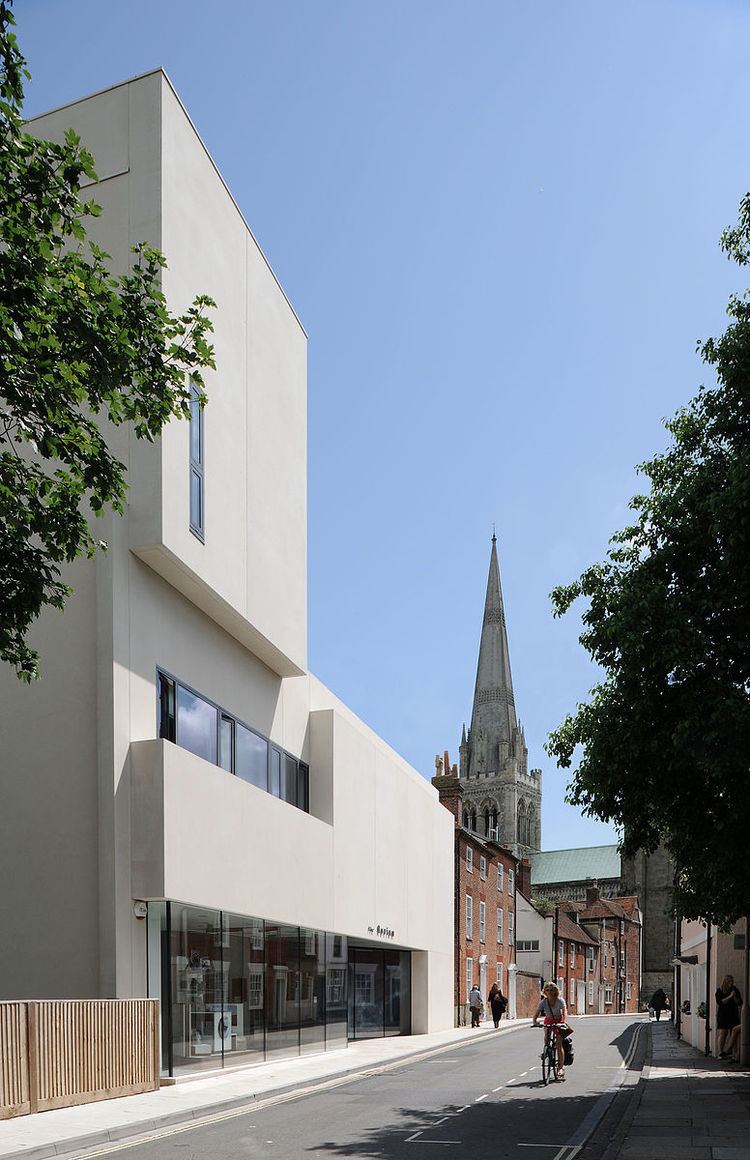Type Museum Phone +44 1243 775888 | Inaugurated 2011/12 | |
 | ||
Hours Closing soon · 10AM–5PMWednesday10AM–5PMThursday10AM–5PMFriday10AM–5PMSaturday10AM–5PMSundayClosedMonday10AM–5PMTuesday10AM–5PMSuggest an edit Similar Bishop's Palace Garden, Fishbourne Roman Palace, Tangmere Military Aviation, Weald and Downland Living Mu, Goodwood House Profiles | ||
Learning at the novium museum
The Novium is the name of a museum in Chichester, West Sussex, southern England. The name comes from the Roman name for the city "Noviomagus Reginorum".
Contents
- Learning at the novium museum
- School trips to the novium museum
- History of Chichester District Museum
- History of the site
- Key highlights
- References
The museum, designed by the architect Keith Williams following an architectural design competition managed by RIBA Competitions, has an area of 1,300 sq m which is approximately 2.4 times the size of the previous museum in Little London. The building is divided into three floors each of which will contain a gallery for exhibition. It contains a research and learning room as well as a collection store for the social history collection. The museum is built directly over the top of the Chichester's Roman Bath House complex which are displayed in the ground floor gallery.
The collection is compiled of over 350,000 object that are made up of geological, archaeological and social historic artefacts. The social history and geological collections is made up of some 50,000 object which are housed within the new building, whilst the archaeological collection is contained in a purpose built store within the Discovery Centre located at Fishbourne Roman Palace.
The museum was opened on 8 July 2012.
School trips to the novium museum
History of Chichester District Museum
In 1831, Dr John Forbes decided to form a Philosophical and Literary Society in Chichester and, as one of the objectives of this society, Chichester Museum was founded as a Natural History collection. The museum was initially located in the Royal West Sussex Hospital, and the collection was formed for donations from the general public. The Museum was later relocated to 45 South Street after plans for a move to 7 North Pallant where abandoned due to financial difficulty.
In 1851 interest in the museum was motivated by the Great Exhibition in London, and the decision of the Archaeological Institute of Great Britain and Ireland to hold their annual conference in Chichester. This led to a boom of local interest in local heritage, and extensive excavations were carried out in the area.
The 1890s saw a dramatic decline in interest, which led to the unfortunate decision to sell artefacts to support the museum. In 1914 the museum building was commandeered by the army and rumours of wanton destruction of the remaining exhibits. By 1924 there was little left of the museum and the collection had been completely sold.
During the 1930s, a wave of interest led to attempts to resurrect the museum. However, the City Corporation showed little interest in funding the venture. Finally in 1936 a two-week exhibition was displayed in the Guildhall, Priory Park using artefacts that had been collected over the previous three years. This led to the Guildhall becoming a store for artefacts collected over the next 25 years. In 1961 another temporary exhibition was opened in the Assembly Rooms which inspired a local architect to purchase a disused Corn Mill, which he offered to lease to the council for the specific purpose of opening a museum.
In 1962, the new museum opened its doors under the name of Chichester Museum with displays of 18th-century local art, and was formally opened in April 1964 by the Duchess of Richmond. The collection has increased dramatically since its opening due to the extensive archaeological work that has been ongoing in the area. In 1974 the museum was renamed the Chichester District Museum to reflect its direct association with the District Council.
The most recent event in the museum's history was the closure of the Little London Corn Mill in anticipation of the move into the museum's new premises and persona at The Novium.
History of the site
Evidence for the Roman baths was first identified in 1960 during works at the rear of Morant's Store, later the Army and Navy store. This first observation identified a section of black and white mosaic along with a fragment of wall. Further archaeological excavation was undertaken in 1972 during the construction of the Post Office Building. At that time the site was scheduled to become a multi-storey car park, the construction of which would have meant the complete destruction of all archaeological layers.
